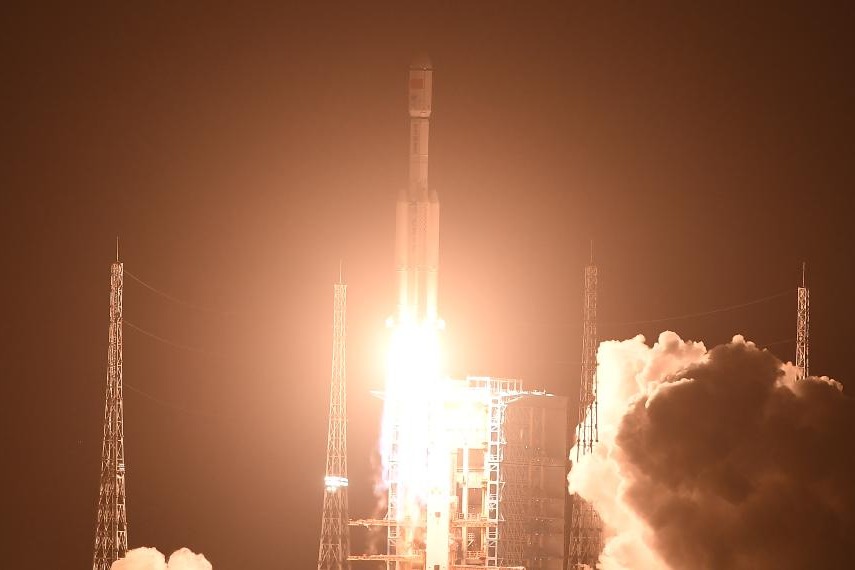Key to China's emissions goal

Country needs cleaner ways of using coal as well as a rapid growth of renewable energy to achieve carbon neutrality

At the general debate of the United Nations' 75th General Assembly on Sept 22, President Xi Jinping said that China will achieve carbon neutrality by 2060. In terms of production and consumption, China currently has the world's largest fossil energy system, which accounts for about 85 percent of China's primary energy source. Therefore, the transformation toward carbon neutrality over the next 40 years will be a major challenge for China's energy industry.
China still has a "production-based" rather than a "consumption-based" energy consumption structure. Take electricity as an example: The commercial and residential electricity consumption of the United States is close to 76 percent, while that of China is only 30 percent. As for the direct coal consumption flow, the vast majority is consumed by the secondary industry. Of the final coal consumption, about one-third is used for direct consumption and two-thirds are used for capital formation (including infrastructure construction).
The low-carbon transformation in China calls for the significant reduction and control of coal consumption, which is in line with China's current goals of addressing climate change and controlling environmental pollution. However, the recent decline of the proportion of coal consumption in China's total power use by around 1 percent per year is largely attributed to the increase of oil and natural gas consumption. Despite the cost of renewable energy falling, it has not helped to significantly improve China's energy consumption structure.
The existing energy structure makes China's low-carbon transition very difficult. Hydropower has seen stable growth without large potential. The consumption of wind power and photovoltaics is growing fast. But due to their small proportion, it is difficult to make a significant contribution in the short term. Only by accelerating the development of renewable energy to a large proportion in the energy mix, will it be possible to replace coal while meeting energy demand. Therefore, fossil energy (coal) could still be the basic guarantee for China's energy security for a long time.
At present, an important condition for faster coal substitution is that energy demand must be very low. The country's demand for energy and power increased by less than 1 percent in 2015 but it soon rebounded. Compared with developed countries, the relatively low per capita capital stock determines that China's energy and power demand will maintain a relatively high growth. Of course, to build up the per capita capital stock could take a long time, and it will be affected by phased development goals and the internal and external environments.
Judging from the development history of China in recent decades, the relationship between energy and electricity demand and GDP is very unstable. This is because the demand is too concentrated in industries, especially heavy industries (accounts for about 60 percent of total consumption of energy and electricity).
China is still experiencing relatively rapid economic growth and its energy demand will continue to have large fluctuations. The imprecise projection of demand, energy planning and investment have led to both an excess of power production capacity and shortages. Besides steady GDP growth, a stable energy consumption structure is also needed to reduce fluctuations in energy consumption.
Heavy industry is very sensitive to economic operation, and amplifying the impact of economic conditions on energy and power consumption makes it possible for energy and power consumption to deviate significantly from GDP.Large fluctuations in energy consumption and power consumption seems inevitable in the current development stage, making energy forecasts and planning comparisons difficult.
China needs to take both energy costs and security into account to achieve the country's low-carbon transformation. Since the clean coal is constrained by high costs and carbon emissions, many regions will have to adopted the strategy of moving toward net-zero carbon emissions, as this is a more flexible and easier strategy to implement. This can help reduce costs during the transformation.
Due to the high carbon emissions from coal consumption and the country's coal-based energy structure, the key to China's low-carbon transformation lies obviously in coal reduction. As such, in the process of achieving carbon neutrality, China also needs explore cleaner ways of using coal in the entire coal production-utilization chain. Coal-to-gas and coal-to-liquid can help moving air pollution to areas with lower environmental cost, and improve China's energy security. The effective complementing of coal with other renewable energy sources is also important to clean and low-carbon development. Carbon Capture, Utilization and Storage technology will need to be supported.
Energy storage will play a leading role in China's clean energy system, in which photovoltaics bear the greatest potential. The increasing use of electric vehicles can help reduce the emissions produced by vehicles, and reduce the electricity system cost by utilizing the electricity in the off-peak hours.
The main issue to promoting renewable energy now lies in infrastructure building. Internet-based smart energy use, multi-energy complementing and energy micro grids can improve the efficiency of China's energy system. Large-scale power grids and distributed energy storage can both help address the volatile power supplies of renewable energy. Considering that the costs of large-scale power grids will go up, but the costs of energy storage are decreasing, energy storage should be a better approach to promoting renewable energy use.
According to the Environmental Kuznets curve, governments focus on economic growth in the initial stages while turning to environmental protection once income improves. China's goal at the current transitional stage is to achieve the low-carbon use of coal and rapid growth of renewable energy.
An effective energy system should provide sustainable, safe, affordable, and accessible energy for all. While some environmental pollution can be addressed through actively abatement, industrial transfer remains the major solution for reducing emissions. In light of the domestic energy structure, industrial structure and development reality, the government needs to strike a balance between ensuring economic development, environmental sustainability and energy security to achieve carbon neutrality by 2060.
The author is the dean of China Institute for Energy Policy Studies at Xiamen University. The author contributed this article to China Watch, a think tank powered by China Daily. The views do not necessarily reflect those of China Daily.
If you have a specific expertise and would like to contribute to China Daily, please contact us at opinion@chinadaily.com.cn, and comment@chinadaily.com.cn.

































